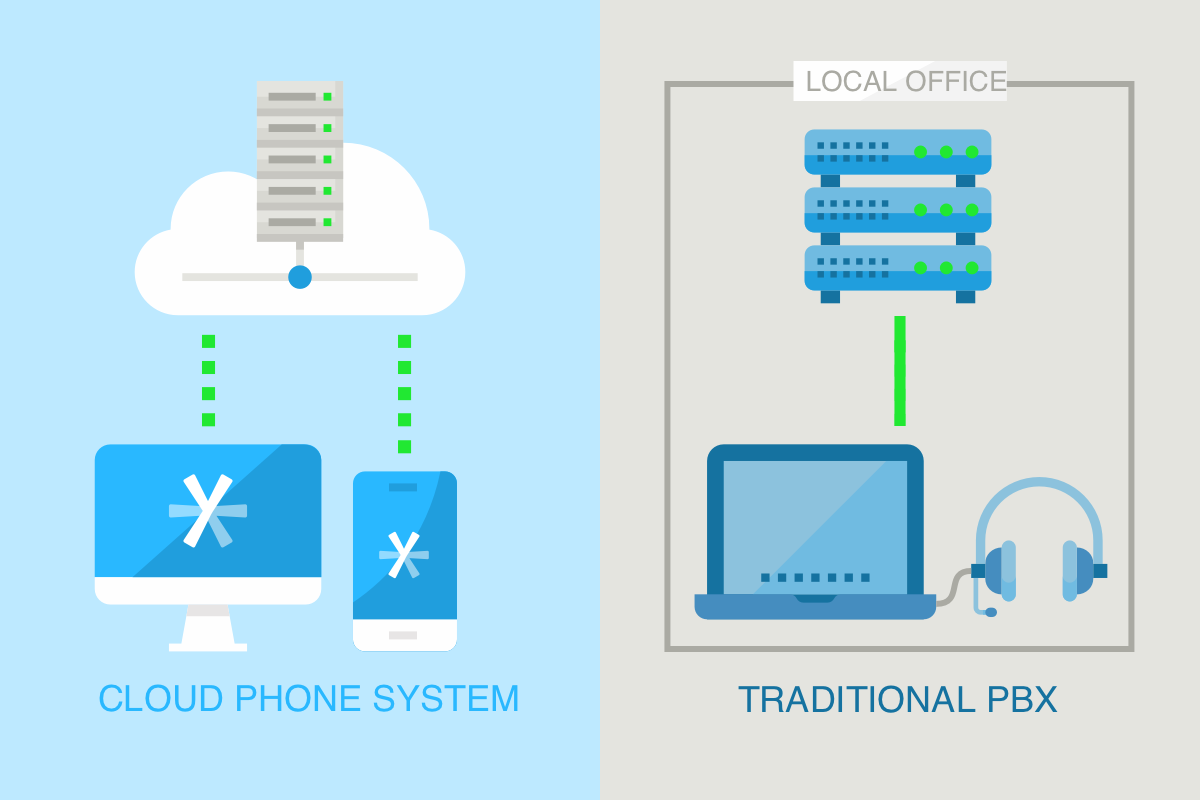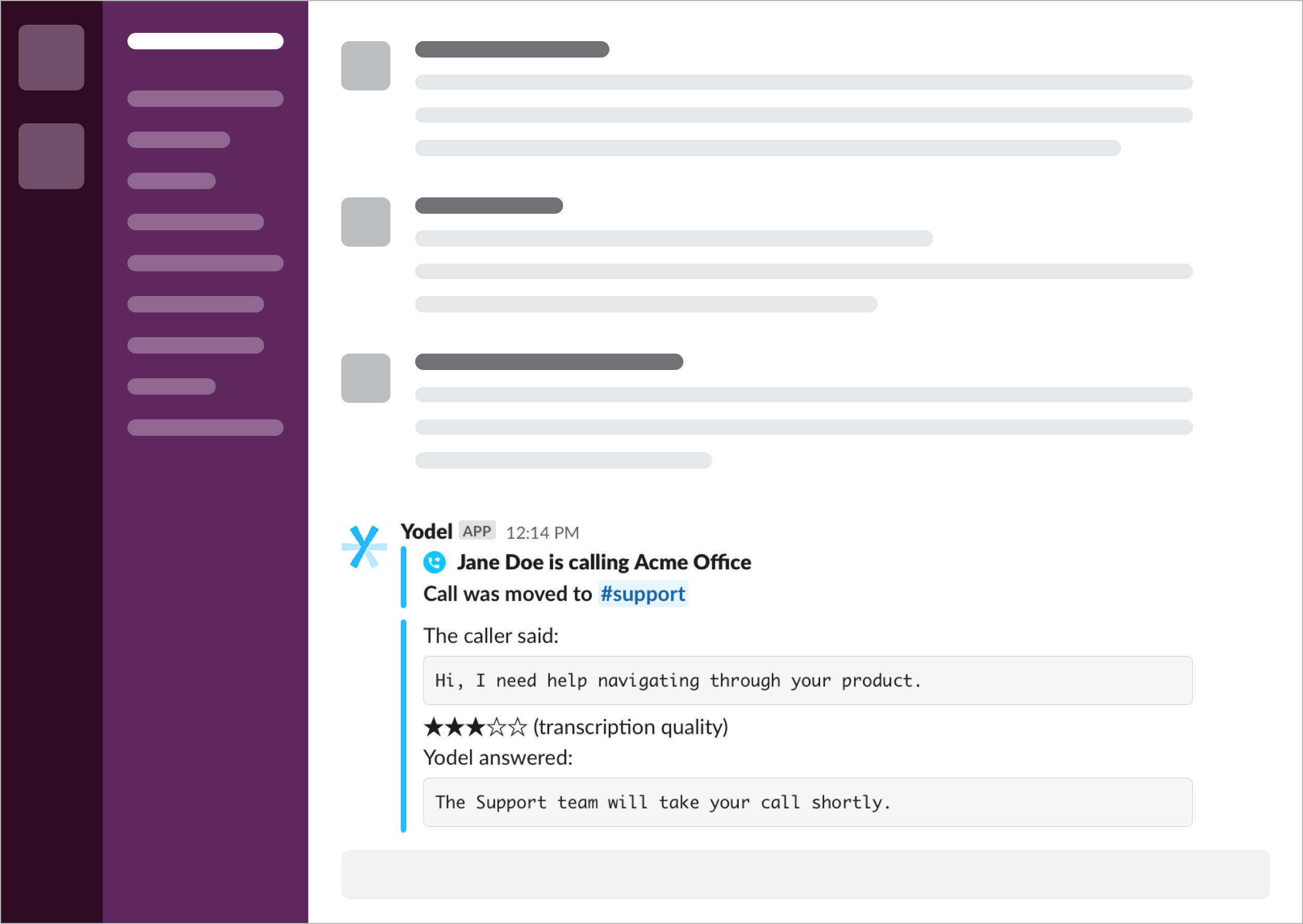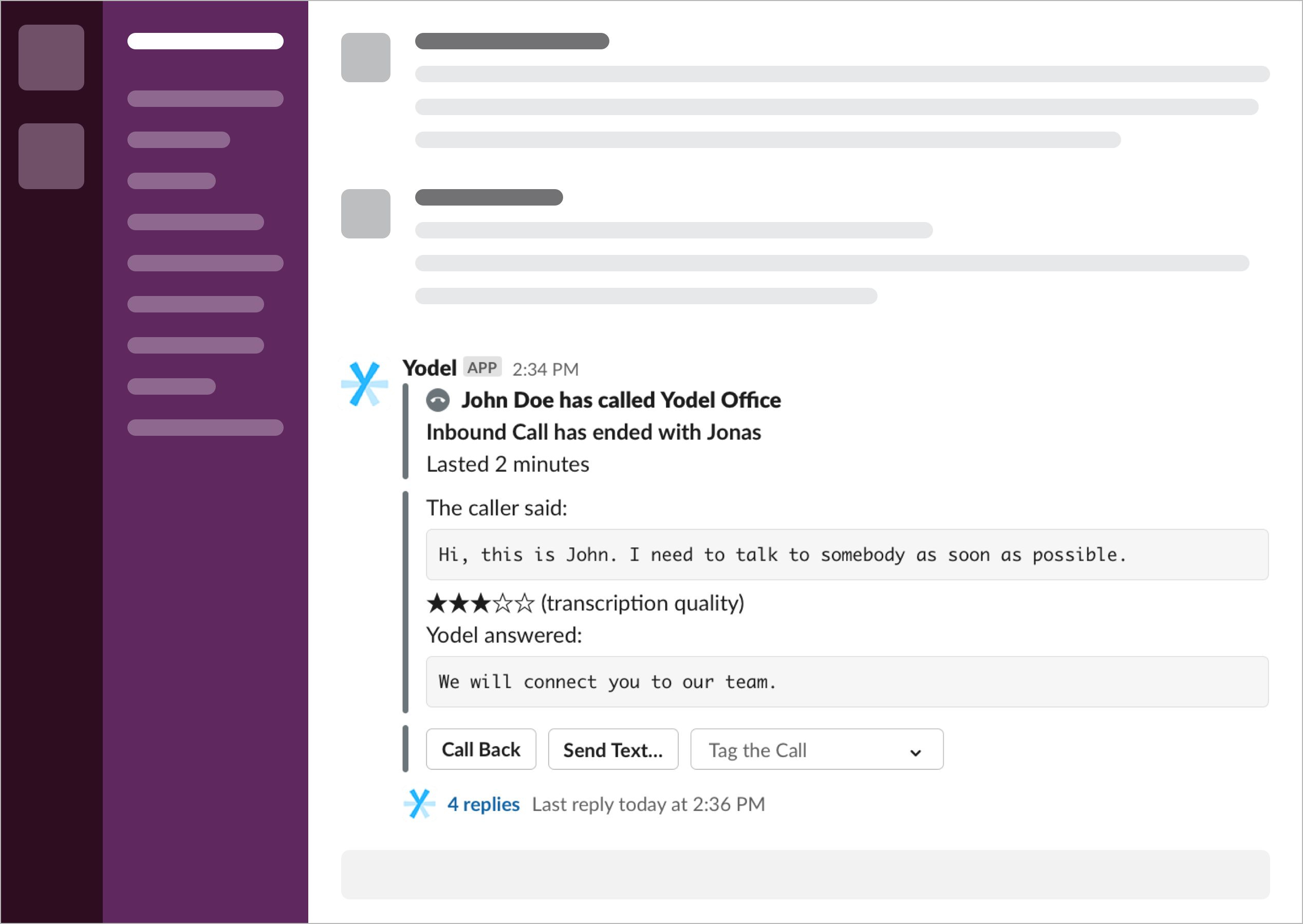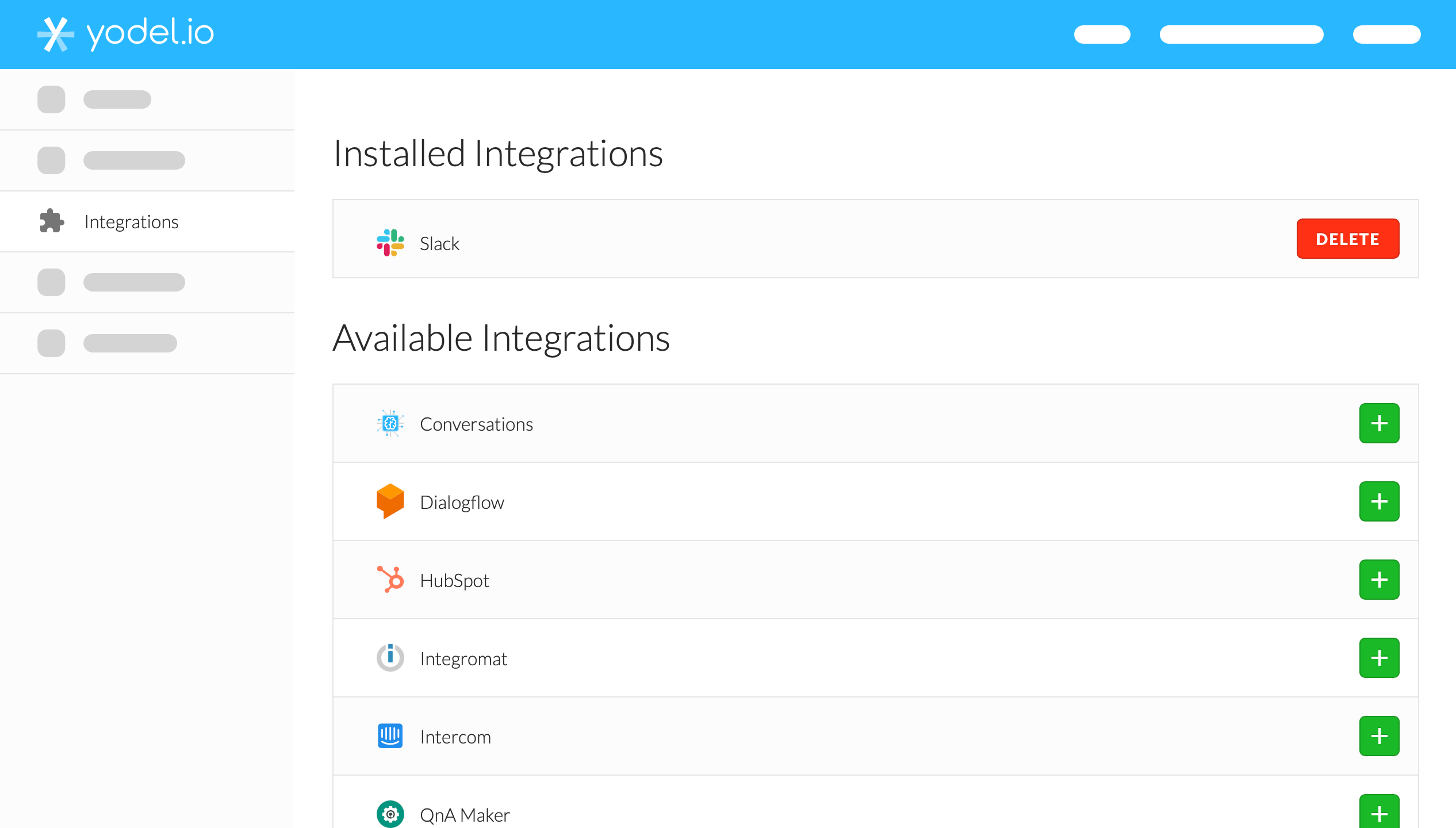
Olivia Maier
We’re going to dive into everything you need to know about virtual phone systems, and how they can help you better serve your customers and teammates even when working remotely. To begin, we’re going to make sure that everyone knows what a virtual phone system is, and how it works. From there, we will be discussing the benefits of using a virtual phone system, especially in the context of remote working.
Then we’re going to help you prepare for the virtual phone system search by giving you a handy checklist that will help you as you sift through the top virtual phone system providers. Finally, we’re going to wrap up by answering some of the most frequently asked questions regarding virtual systems and working remotely.
If that sounds good to you, then we can’t wait to turn you into a virtual phone system pro.
We want to make sure that before we get too far ahead of ourselves, we are all on the same page in terms of what a virtual phone system is, and how it can transform your business phone communication.
Virtual phone systems are Internet-based systems that are able to ditch the traditional phone wires, and expensive hardware. Instead, they offer flexibility through using advanced technology to deliver voice signals over the internet.
These phone systems are also called VoIP, or internet telephony systems and they are accessible to businesses of all sizes and styles. Many systems will let you take advantage of a variety of devices too, but don’t worry, we’ll talk more about that later.
Teams are able to adopt these Internet-based systems without having to invest heavily in traditional telephone services and their hardware.
A virtual telephone system does not require a traditional telephone line or telephone number, but a connection to the internet. You can share these services with your teammates and be able to handle calls, forward of calls, or join calls, etc.
It may surprise you but not all internet based phone systems utilize cloud technology. They are instead a subset of the larger VoIP group.
Cloud phone systems are a type of Internet-based systems that use the latest technology to provide voice communication. All VoIP systems require expensive and intricate servers to operate, which large enterprises will often store on-site.
However, the cost to maintain, upgrade, and service these servers is fairly significant. These systems require a business to house the servers in a specific location, making it inaccessible for a virtual or remote working team to take advantage of a VoIP system. They also are typically only within the budget for large enterprises.
That is why VoIP providers will make these systems more accessible by providing a cloud based option.
Cloud phone systems are hosted offsite, meaning that your business won’t have to worry about expensive overhead or maintenance costs that are oftentimes associated with internet phone systems. By utilizing cloud technology, VoIP systems are able to give you access to the most up to date services without burdening your business with hefty infrastructure costs and servers.

When you are working remotely, a cloud phone can ensure that your entire team has access to a professional and secure phone system.
It may be tempting to encourage employees to use their personal phones, and phone numbers, when working remotely. However, this practice could have serious consequences for your team and your customers.
Your team members would be forced to give out personal information to clients and customers every time they want to make a phone call. This already is a serious invasion of privacy, and could lead to your team feeling frustrated over the lack of separation between their personal lives and work.
Your customers can also be hurt from this practice. A personal phone number or system isn’t set up in the same way that a business phone system is. That means that handy features such as intelligent call routing wouldn’t be available.
From a business perspective, your customers won’t be able to rely on a consistent business phone number as a point of contact. This could lead to missed opportunities and clients as they experience difficulties getting in touch with your team.
When you have a cloud phone system, you aren’t tied to one physical location. Instead your remote working employees will be able to access your phone system from anywhere. You can even forward and transfer calls to employees in a different location.
Your business phone number will stay consistent, while being able to be accessed from anywhere around the globe, and your team will be happy to access a robust phone system that doesn’t rely on their own personal phone numbers.

While it is by no means necessary to understand the technology behind cloud phones, breaking down the process may help you better understand the difference between a cloud phone and a traditional phone.
Some people may be worried that if they switch to a cloud based phone, that either their callers or their team would experience a significant difference in communication. The great news is that there won’t be a difference for anyone involved, other than seeing the fantastic benefits that a cloud phone can bring. But don’t worry, we will be addressing those more in detail later on.
The operation of a cloud phone is the same as any other phone call you have made in your life. If you want to initiate a call, you simply dial the number and are instantly connected. Your caller on the other end, whether they are using a cloud phone or a traditional phone system, won’t notice any differences in the mechanics of the call either.
For everyone involved, mechanically you are making calls the way that you always have. This is a great benefit for everyone using your phone system, as you won’t have to adopt a new process when switching to a virtual phone system.
The technology behind the phone system is where one of the key differences in these systems lies.
Instead of relying on the antiquated phone lines, aka those copper wires that were installed decades ago, your phone is able to send and receive voice signals over the internet. This is done by:
This instantaneous process has zero delays to it, so you don’t need to worry about lag times during the process.

We want to make sure that you are aware of the TOP benefits of a virtual phone system that go beyond the ability to work remotely. While some of these benefits will go hand in hand, it is important for us to make sure that you are aware that a virtual phone can enable your remote work while still providing benefits that a traditional phone may not be able to. When you are looking for these systems, you shouldn’t settle for a business phone that can’t offer the following advantages to your team.
It might be easier said than done determining if a provider will ACTUALLY provide a benefit for your team, or is just all talk. That is why as we go through these different benefits, we will be providing you with examples of features that can help you actually see the benefits in action. While there may be other features that can lead to the same results, these are just a few of the most common or necessary components that can benefit your business phone system.
Easy configuration is an exciting benefit to a virtual phone system. Your team shouldn’t have to be technology wizards, or learn a whole new coding language just to implement an internet based phone system. Instead, these systems could be easy to set up, and easy to use.
One of the easiest ways to make sure that the phone system is easy to use is to take advantage of a free trial. The best free trials will give your team access to most if not all of the features provided by that phone system, so you can get a realistic look at the tool your team may adopt.
Additionally, making sure that there are adequate resources available in terms of support will go a long way in ensuring that you have an easy process when implementing your new business phone. These resources should range from help directed help guides such as an FAQ page or help articles, to live support calls and even demo calls. Having access to a wide range of resources will ensure that you have the ability to address any issues that you may have at any point, and from a variety of methods.
Generally speaking, hosted virtual phone systems will range from $15-$40 per user, per month. The scalability of these systems are a great perk, as you are billed per user. This means you won’t be stuck with a large overhead cost that varies in value based on the size of your team.
For a landline business phone system from a reliable provider such as AT&T or Verizon, cost will start at $40-$60 per line, per month. Typically it will cost an additional flat rate to increase the number of lines available. You will also have to pay a hefty installation fee if you don’t already have the copper wires that these systems depend on installed. The installation of those copper wires is what limits a traditional phone, and doesn’t allow it to be a solution that lets you work from anywhere. That’s on top of it being more expensive, making it an easy choice to ditch the traditional and less cost effective option.
While your business phone may be a monthly expense, it is a necessary one to provide professional customer service. But, it could be worthwhile to opt for the more affordable VoIP option, especially as you discover the other advanced capabilities that a VoIP system can offer.
Virtual phones are known for giving teams access to a wide variety of business phone numbers. After all, one of the major differences between a virtual phone and a traditional phone is the fact that a virtual phone number isn’t tied to one location. That means that your business phone number doesn’t have to be either.
One of the best ways to take advantage of virtual phone numbers is to consider adding phone numbers for local areas where you currently are doing business, or would like to expand. This can be through other domestic markets, or even through international virtual phone numbers.
The benefit of having a virtual phone number for a location where you may not be physically present, but do a lot of business, is immense. Your potential customers will feel more confident in your business as you present a local connection, and the marketing benefits can bring in new clients and customers. If you are doing a lot of business internationally, potential customers will feel more comfortable calling a number with their country code, as they won’t be worried about international calling fees.
Here’s a rundown of some of the most important types of phone numbers that your business should have access to:
Port your existing number:
If your team has spent time and money on any marketing material, have existing customers, or a local presence, you probably aren’t eager to change your phone number. When you have a phone system that enables you to port your number, you can keep your existing phone number even with a new provider.
Virtual phone numbers:
Your business phone number can now go virtual, as you take advantage of local area codes from around the world. That way you can appear as a local business wherever you do business, without having to have a physical location. That means your customers can reach you without having to worry about out of area phone calling charges.
International virtual phone numbers:
Just like a virtual phone number, your team should have access to phone numbers that are from around the globe. The most robust phone systems will give you a wide range of local and international area codes to choose from.
Toll free numbers:
Take advantage of accessible toll-free numbers, which help reduce potential phone charges for your customers. These phone numbers are easy to recognize, as they often start with familiar area codes such as 1-800, 1-888, and so on.
When you are working from anywhere, you will want to know that the devices you have or plan to adopt will be compatible with your business phone. There are a wide variety of devices that a virtual phone system should be able to support, some of which are more conducive for remote work or traveling while working. However, even if you work from anywhere you may decide to have a home office or other working space that could take advantage of some or all these device types.
No matter what your work space situation is, you should be able to access your virtual phone system. Make sure that your team has the right options to do so, and find a system that offers the following:
Desktops and laptops:
Your team is likely already using a computer to conduct their day to day business and stay on task. With so many business softwares and tools being accessible through their computers, why should your phone system be any different? Look for a virtual phone that allows for either a computer app, or access through a web-browser.
Mobile and tablet apps:
Make sure that your phone system is accessible from a wide variety of devices and locations. With mobile and tablet apps, you can take advantage of your business phone system wherever you are.
Hardware SIP phones:
If your team has an office space, or has already invested in the typical business office phones that you are used to seeing, you may want to consider continuing their use. A hardware phone can be convenient and familiar, helping to simplify the onboarding process. Look for a virtual phone system that can be accessed through a hardware SIP phone.
Call collaboration is essential to having effective communication. Allow your team to work together, to further your phone processes and increase customer satisfaction.
Especially if you are working virtually and from all over the globe, you need tools on your side that will allow you to stay connected and improve collaboration. There are a wide range of features that can help you do so. The most important features will allow you to assist your colleagues while on an active call, so that you can ensure your callers and customers are handled in the most efficient and effective way.
Some essential features to look for that will best enable team collaboration are call whispering and call monitoring.
Another great set of features includes Ring Groups and a Live Activity feed.
As your business grows, you want to make sure that your tools can grow with you. That is why having a highly scalable business phone system is important.
No matter if your business is growing in terms of team members, customers, or locations, a virtual business phone will be able to grow with you. Whether that means adding lines, new and unique phone numbers, or simply more users.
A virtual phone system is typically billed on a subscription basis, per user/month. That way as your team or business grows, you can simply add on more users without seeing a significant cost increase. You also will typically have unlimited lines or users, but that will vary based on your specific provider.
Since your virtual phone system can be accessed from anywhere, you won’t need to worry about going through a long and complicated process to add your phone number to a new location. Instead you can just have your team members access your virtual phone from that spot!
Adopt an intelligent business tool that can grow with your business, preventing unnecessary switches between providers in the future.
Support options
We mentioned support options before as a way to ensure that your phone system is easy to implement, but the right provider will give you access to incredible support throughout your time using their system. You want to make sure that your virtual business phone system provider will be there for you if anything goes wrong, or even if you just want to learn more about their product. Look for providers that give you options such as free demo calls, webinars, newsletters, and other resources that you can take advantage of. When you have a wide variety of options at your fingertips, your team will always be able to access necessary support and learn best practices from your provider.
Variety of Virtual phone numbers
With a virtual phone, you will automatically have access to a virtual phone number. But, the top providers should be able to offer a wide range of virtual phone number types. This should include toll-free numbers, international numbers, as well as porting in your existing phone number. Your free trial should include access to a phone number, which can include porting your existing phone number into your potential new provider. Don’t lose your existing phone number, miss out on the opportunity to test out a virtual phone number of your choice. Take advantage of the right virtual phone number for your business.

Intelligent IVR
IVR is the business phone technology that enables your phone system to route an incoming call. Especially as you work remotely, you want to make sure that your phone system is accurately and effectively sending calls to the right team member or group. Traditional IVR system will rely on menu options, giving your callers the frustrating experience of “press 1 for sales, press 2 for billing.” In 2022, your customers are expecting more from their phone communication, and want to leave the IVR menus in the past. That is why you should be seeking out an intelligent voice-based IVR system. These systems will route callers based on what they are saying in real time. Look for an IVR system that can route both to a specific person or group of people.

Business texting
Open up a new channel of communication with your customers by allowing for business SMS messaging. This means that you will be able to send and receive text messages from your business phone number, keeping communication consistent and accessible. When you unlock business texting, you are able to communicate with your customers in a convenient channel that may have a better response rate. Your business phone system should also come with a business text messaging log, so that you can see all of the messages sent from your business phone number.

Call tagging:
Keeping track of business phone calls in an easy to sort through and categorize manner is important for effective phone communication. When you have access to call tagging, you will be able to filter and sort through completed calls.Add customizable tags to your call log, so you can easily search through, sort, and aggregate information. This way you can easily access summaries or descriptions of completed calls.

Voicemail transcriptions:
Sometimes audio files aren’t convenient, and simply reading information would be easier. With automatic voicemail transcriptions, you can read voicemail messages at your convenience. Voicemail transcriptions should be used in conjunction with audio voicemails so that you can always have access to both. That way you can easily elect to access your voicemail messages in whichever format is best for you at that time.
Shared address book:
One of the best things about a remote phone system is the fact that you can keep information accessible and consistent across your team, even when you are located all around the globe. You and your colleagues should always have one shared address book, to help prevent confusion across users. The best address books will come with contact synchronization capabilities.
Encrypted calls
Secure calling is a must have for any business communication platform. You want to make sure that you aren’t creating a security risk for your team or your callers. Make sure that your callers and your team can rely on securely stored data and information. This can give everyone involved an additional peace of mind, while enhancing your ability to organize important information.
Unlimited concurrent calls:
Your team may grow in size, or receive a larger number of calls. Don’t set arbitrary limits on your phone capabilities, and instead opt for unlimited concurrent calls which will allow for unlimited parallel calls on the same phone number, at the same time. As your team works remotely, it would be tricky or impossible to monitor and effectively use a limited number of concurrent calls. That is why having no limits on concurrent calls helps to best support your team as you communicate with callers.
Conferencing:
Give your team the ability to join in, or just listen to, any of your incoming or outbound calls. This way you can keep everyone in the loop when necessary. Call conferencing is an essential for any business phone system, as it gives you an easy way to connect with multiple parties. Make sure that your virtual phone system can provide this important capability for your team.
Call whispering:
Call whispering features will allow your team to “whisper” to one another while on a live call. This way you can communicate without the person on the other end of the call hearing or being confused by multiple agents handling their call. This is one of those essential features that can enhance your ability to collaborate and work effectively as a team. With call whispering on your side, you can assist your colleagues without having to disrupt an active call.
Smart integrations
Your team is likely using more business tools than just your phone system to run effectively. Whether that means that your team lives in a tool like Slack, loves to take advantage of CRM platforms, or has a place to manage incoming tickets, you don’t want to miss out on connecting your phone with these tools. When your VoIP provider offers smart integrations, you will be able to effectively combine your phone communication with these tools. This can allow for a better flow of information, preventing harmful information silos, and create more effective workflows.

Before we wrap up, we want to make sure that all of your questions are answered. Since we can’t ask you directly, we figured we would address some of the most common virtual phone system questions in hopes that this helps clarify any unanswered questions.
The best virtual phone system will be able to meet all of the qualifications we talked about before. That means providing all of the top benefits, and meeting all of the components on the checklist that we had talked about previously.
Not to be biased, but we think that Yodel.io is the best virtual phone system especially for remote teams. Our system is trusted by thousands of teams all over the globe, who count on us to provide top tier, affordable, and accessible phone communication.
The setup of a virtual phone system should be easy through an onboarding process. This process should be easy to follow, but if you are worried about your team switching to a new system take advantage of a live demo call.
Your virtual phone system provider should be able to ensure a smooth onboarding process, and taking advantage of a demo call should be a great way to familiarize your team with the new phone system.
Can a virtual phone be used at home?
Yes! The only requirement for a virtual phone system is to have a reliable internet connection, and a device that is compatible with your provider.
The device type will vary based on the provider that you select, but if you are taking advantage of Yodel you will be able to access your virtual phone from a wide variety of devices including: desktop computers, laptops, mobile phones, tablets, and hardware SIP phones.
Adopting a virtual phone system can help your business enable more flexible working, while accessing an important business tool wherever you are. We hope that this guide has helped you see the whole new world that a virtual phone system can open up, and the amazing benefits that it could bring.
If you are looking for a virtual phone system to help you work from anywhere, while accessing advanced technology, then consider taking advantage of Yodel.io’s free trial. With 14 days to test out our system, you will be able to see all of the features that have left thousands of companies trusting us. You can also take advantage of live demo calls along with other resources to ensure a smooth start with Yodel.
We hope that you have been able to learn everything that you were hoping to about virtual phone systems, and the ways that they can equip your team with enhanced remote and flexible capabilities. Get started with Yodel’s virtual phone system today.
